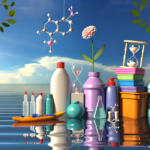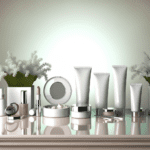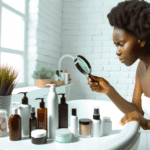Introduction to PEG Compounds
Polyethylene glycols, commonly known as PEG compounds, are synthetic chemicals with a wide range of molecular weights and properties. They are formed by the polymerization of ethylene oxide and are used extensively in both cosmetics and pharmaceuticals due to their versatility as solvents, thickeners, softeners, and moisture-carriers. In cosmetics, PEGs are found in products such as creams, shampoos, and toothpaste, while in pharmaceuticals, they are used as excipients in medications to improve solubility and stability.
Overview of PEG as a Base for Cosmetic Creams
PEG compounds are particularly valued in the cosmetic industry as a base for creams. Their ability to attract water and bind moisture makes them excellent for hydrating skin products. PEGs are also used to enhance the texture of creams, giving them a smooth and spreadable consistency that is both appealing to consumers and functional for product stability.
PEGs as Moisture-Carriers and Solvents
As moisture-carriers, PEGs draw water from the environment into the skin, which helps to maintain the skin’s moisture balance. This property is particularly beneficial in products designed for dry or dehydrated skin. Additionally, PEGs act as solvents, dissolving other ingredients within a formulation to ensure even distribution and performance of the product on the skin.
The Prevalence of PEGs in ‘Natural’ and ‘Organic’ Products
Despite their synthetic nature, PEG compounds are often found in products labeled as ‘natural’ or ‘organic.’ This is due to the lack of strict regulations governing these terms in the beauty industry. Consumers seeking genuinely natural or organic products may be surprised to find PEGs listed among the ingredients, raising questions about the transparency and accuracy of product labeling.
In conclusion, PEG compounds play a crucial role in the formulation of a wide range of cosmetic and pharmaceutical products. Their ability to function as bases, moisture-carriers, and solvents makes them indispensable in the industry. However, their presence in products marketed as ‘natural’ or ‘organic’ highlights the need for greater consumer awareness and industry regulation.

Do you have the most commonly used but toxic, disease bringing chemicals in your skin care? Many chemicals in skincare are hormone disruptors and make menopause symptoms worse.
Find out more…
Health and Environmental Concerns
Contamination with Ethylene Oxide and 1,4-Dioxane
Polyethylene glycols (PEGs) are prevalent in numerous cosmetic and pharmaceutical products, serving as solvents, thickeners, and moisture-carriers. However, the manufacturing process of PEGs can lead to contamination with ethylene oxide and 1,4-dioxane, both of which pose significant health risks. Ethylene oxide is classified by the International Agency for Research on Cancer as a known human carcinogen, while 1,4-dioxane is considered a possible human carcinogen. These contaminants can remain in products and, consequently, may expose consumers to carcinogenic compounds.
Carcinogenic Risks and Genotoxicity Evidence
The presence of ethylene oxide and 1,4-dioxane in PEG compounds raises concerns about carcinogenic risks. Studies have linked ethylene oxide to increased incidences of leukemia, breast, uterine, and brain cancers. Similarly, 1,4-dioxane has been associated with cancer risk. Beyond their carcinogenic potential, PEG compounds themselves have shown some evidence of genotoxicity, which refers to their ability to damage genetic information within a cell, causing mutations that may lead to cancer.
Impact on the Nervous System and Developmental Toxicity
Health concerns extend beyond carcinogenicity. Ethylene oxide exposure has been associated with neurotoxicity, including peripheral and central nervous system toxicity. It has also been classified as a developmental toxicant, indicating potential interference with human development. The use of PEGs on broken skin can exacerbate these risks, leading to irritation and systemic toxicity due to their role as penetration enhancers, which increase the absorption rate of harmful ingredients.
Environmental Persistence and Ecological Effects
The environmental impact of PEG compounds is equally troubling. 1,4-dioxane is known for its environmental persistence; it does not easily degrade and can remain in the environment long after being washed down the drain. This persistence poses a risk to aquatic life and can lead to long-term ecological effects. The production and disposal of PEGs contribute to the accumulation of these pollutants, highlighting the need for more sustainable and environmentally friendly alternatives in the industry.
Manufacturing Processes and Consumer Safety
Methods to Remove Contaminants
Polyethylene glycols (PEGs) are widely used in cosmetics and pharmaceuticals for their versatility as thickeners, solvents, and moisture-carriers. However, the manufacturing process of PEGs can lead to contamination with ethylene oxide and 1,4-dioxane, both of which pose significant health risks. To mitigate these risks, manufacturers employ various methods to remove contaminants. One such method is vacuum stripping, which is particularly effective in reducing levels of 1,4-dioxane. This process involves lowering the pressure to facilitate the removal of this contaminant as it has a lower boiling point than the PEG compound itself. Other methods include distillation and advanced filtration techniques, which can further purify the PEG compounds before they are used in product formulations.
Challenges in Ensuring Product Safety for Consumers
Despite the availability of purification techniques, ensuring the safety of PEG-containing products for consumers remains a challenge. One of the primary issues is the lack of standardized testing for contaminants in the final products. Additionally, the presence of contaminants is not always disclosed on product labels, as they are not considered intentional ingredients but rather byproducts of the manufacturing process. This lack of transparency makes it difficult for consumers to make informed decisions. Moreover, the variability in the quality of raw materials and differences in manufacturing practices across companies can lead to inconsistent levels of contaminants in products.
The Role of Vacuum Stripping in Reducing 1,4-Dioxane
Vacuum stripping plays a crucial role in the manufacturing process to ensure consumer safety. By applying this technique, manufacturers can significantly reduce the concentration of 1,4-dioxane, a substance that does not easily degrade and can remain in the environment long after it has been washed away. The effectiveness of vacuum stripping, however, depends on the stringency of the operating conditions and the quality control measures in place during production. While this process can make PEGs safer for use, it is not a guarantee, and the absence of mandatory reporting means consumers often remain unaware of whether products have undergone such safety measures.
In conclusion, while methods like vacuum stripping are available to enhance the safety of PEG-containing products, the industry faces significant challenges in ensuring these methods are consistently applied and that the resulting products are free from harmful contaminants. The lack of transparency and standardized testing further complicates consumer safety, highlighting the need for stricter regulations and better consumer education on product ingredients and manufacturing processes.
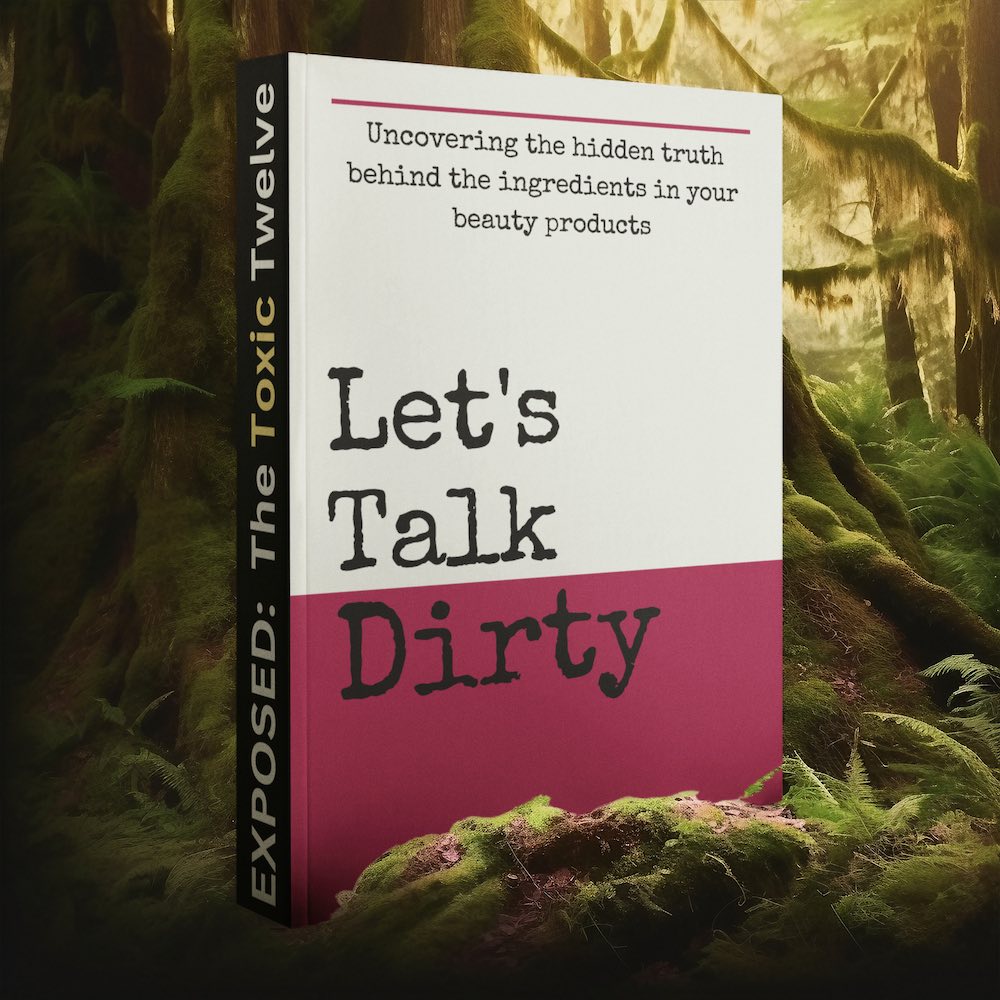
Feeling You Have a Right to Safe Beauty & Fem Care?
If so, it may be time for a change. It starts with knowledge. We have a few suggestions in our new guides.
Regulatory Landscape and Industry Standards
Current Regulations on PEGs and Related Compounds
Polyethylene glycols (PEGs) are widely utilized in various consumer products, including cosmetics and pharmaceuticals. Despite their prevalence, the regulatory framework governing PEGs and their related compounds is complex and varies by region. In the United States, the Food and Drug Administration (FDA) does not specifically restrict the use of PEGs in cosmetics, allowing their use under the general safety clause that requires all cosmetic ingredients to be safe for consumers when used as intended. However, the FDA does monitor the levels of potential contaminants such as ethylene oxide and 1,4-dioxane, which can be by-products of the ethoxylation process used to produce PEG compounds.
Health Canada’s Stance on Ethylene Oxide and 1,4-Dioxane
Health Canada takes a more proactive stance on contaminants in PEG compounds. Ethylene oxide and 1,4-dioxane are prohibited on Health Canada’s Cosmetic Ingredient Hotlist, which lists substances that are restricted or prohibited in cosmetics. However, this prohibition does not apply when these chemicals are present as contaminants. Health Canada and Environment Canada have concluded that 1,4-dioxane does not meet the legal definition of “toxic” under their Chemicals Management Plan, although they acknowledge uncertainty due to limited information on the presence of the substance in consumer products.
The Cosmetic Ingredient Hotlist and Its Limitations
The Cosmetic Ingredient Hotlist serves as a guideline for industry and consumers regarding substances that may pose health risks. While it is a valuable tool for consumer safety, it has limitations. For instance, the Hotlist does not apply to contaminants, which means that products may still contain trace amounts of hazardous substances like ethylene oxide and 1,4-dioxane. Additionally, the Hotlist is not legally binding, and compliance is expected to be voluntary, which may lead to inconsistencies in its enforcement.
Assessment and Classification of Chemical Toxicity
The assessment and classification of chemical toxicity are critical components of the regulatory landscape. Agencies such as the International Agency for Research on Cancer (IARC) classify substances based on their carcinogenic risks, with ethylene oxide labeled as a known human carcinogen and 1,4-dioxane as a possible human carcinogen. These classifications inform regulatory decisions and consumer safety measures. However, the process of assessing chemical toxicity is complex and often involves weighing the evidence from various studies, which can lead to differing interpretations and regulatory responses.
In conclusion, while there are regulations in place to manage the use of PEGs and their related compounds, the presence of contaminants like ethylene oxide and 1,4-dioxane remains a concern. The regulatory landscape continues to evolve as new scientific evidence emerges, highlighting the need for ongoing vigilance and updates to safety standards to protect consumer health and the environment.
Do you know the three main ways that your body gets in touch with harmful chemicals with everyday products? Knowledge is Power!
The Ultimate Detox Guide will tell you how to lower your exposure to harmful chemicals!

Related Ingredients and Alternative Chemicals
Propylene Glycol and Its Health Prioritization
Propylene glycol is a synthetic liquid substance that absorbs water and functions similarly to ethylene glycol, though it is considered less toxic and is used in antifreeze solutions for food-grade applications. In cosmetics, it is used as a skin-conditioning agent, solvent, and carrier for fragrance oils. Despite its widespread use, propylene glycol can provoke skin irritation and allergic reactions in individuals with sensitive skin. It is also a penetration enhancer, meaning it can increase the absorption of other chemicals into the skin, potentially leading to increased exposure to harmful substances. Health prioritization of propylene glycol involves assessing its safety profile and limiting its concentration in products to minimize risks.
Other Ethoxylates and Associated Contaminants
Ethoxylates, such as ceteareth, oleth, and steareth, are surfactants used in cosmetics to emulsify oils and water. They are produced through a process called ethoxylation, which can result in contamination with ethylene oxide and 1,4-dioxane, both of which are potential human carcinogens. These contaminants are not easily removed during the manufacturing process and can remain in the final product. The presence of these contaminants has raised concerns about the safety of ethoxylated compounds, leading to calls for stricter regulation and the development of safer alternatives.
Chemical Names and Identifiers for Consumers to Recognize
Consumers seeking to avoid potentially harmful ingredients should be familiar with the following chemical names and identifiers:
- PEGs (Polyethylene Glycols): Often used in creams and lotions, look for ingredients with “PEG” followed by a number.
- Parabens: Common preservatives, identifiable by prefixes such as methyl-, ethyl-, propyl-, and butyl-.
- Sodium Lauryl/Laureth Sulfate (SLS/SLES): Surfactants found in foaming products; “eth” indicates ethoxylation.
- Phthalates: Often hidden under “fragrance” or “parfum,” these chemicals are used as solvents and fixatives.
- Triclosan: An antibacterial agent found in soaps and sanitizers.
- Formaldehyde Releasers: Preservatives that slowly release formaldehyde, such as DMDM hydantoin and imidazolidinyl urea.
- Siloxanes: Ingredients ending in “-siloxane” or “-methicone,” used in hair and skin products.
By recognizing these names, consumers can make more informed choices and select products that align with their health and safety concerns.
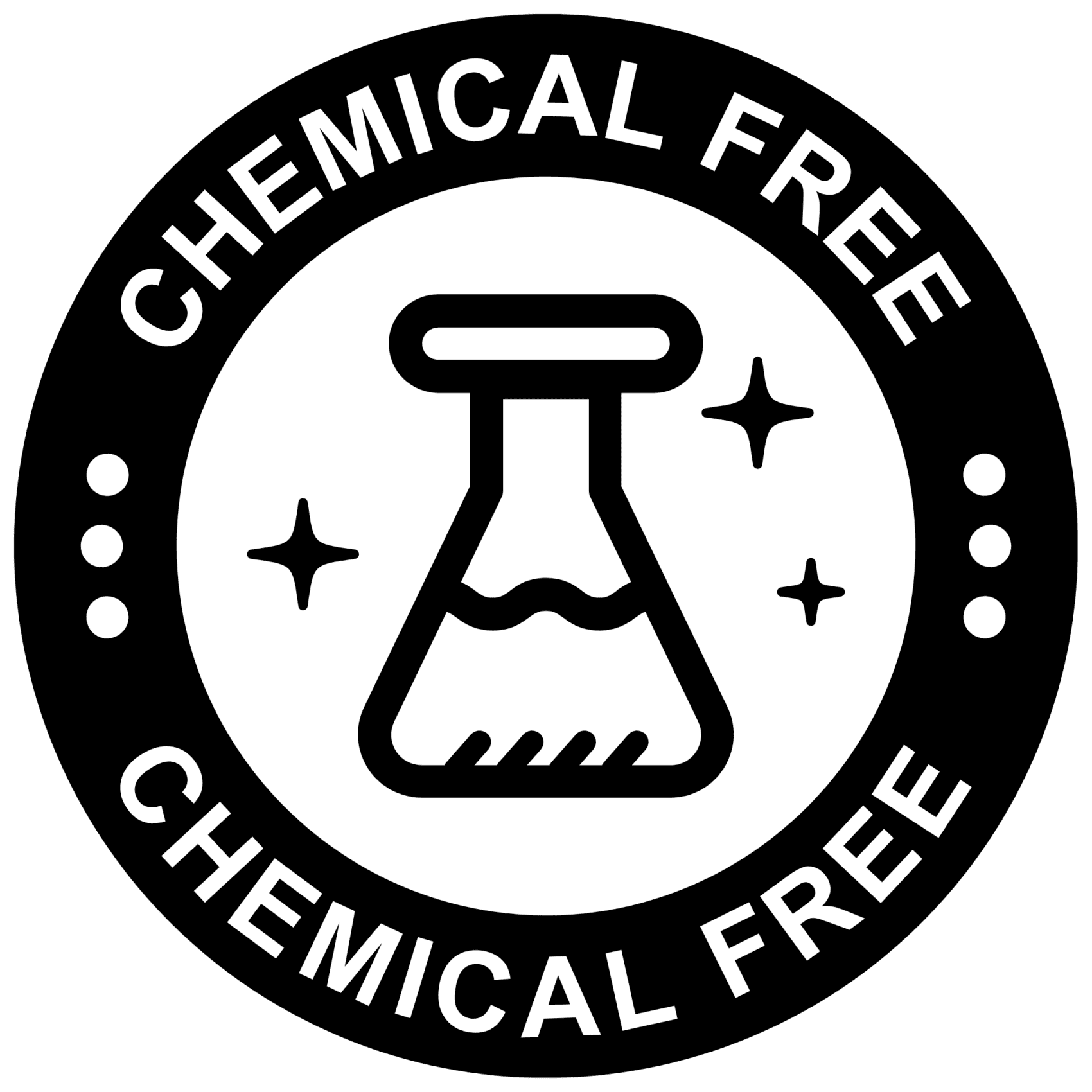
Doubting chemicals in skincare and femcare? Well done! Choose chemical-free products whenever possible.
Consumer Awareness and Product Transparency
The Challenge of Identifying Safe Products
Consumers today face a daunting task when it comes to identifying products that are safe for their health and the environment. With the proliferation of personal care products containing a myriad of chemicals, it’s increasingly difficult to discern which ingredients may be harmful. The cosmetic industry is particularly notorious for its under-regulation, allowing companies to enhance their product labels with terms like “naturally derived,” “nontoxic,” and “clean” — which, while appealing, are largely unregulated marketing terms and do not necessarily guarantee safety.
Experts often disagree on safe exposure levels to various chemicals, and individual testing for these levels is not widely accessible. This ambiguity leaves consumers at a loss, as they must navigate the complex landscape of product ingredients, often without clear guidance. The challenge is compounded when considering the cumulative effect of low doses of potentially harmful chemicals over time, particularly when used in combination with multiple products.
Misleading Branding in ‘Natural’ and ‘Organic’ Cosmetics
The terms ‘natural’ and ‘organic’ have become buzzwords in the cosmetics industry, but their use on product labels can be misleading. These terms are not strictly regulated, allowing brands to use them liberally, often without substantiation. This practice, known as “greenwashing,” can deceive consumers who are seeking genuinely safe and environmentally friendly products. The presence of PEG compounds and their contaminants in products labeled as ‘natural’ or ‘organic’ is a stark example of this issue, as these ingredients are linked to various health concerns and environmental issues.
For instance, PEG compounds, which are used to thicken, soften, and carry moisture in creams and lotions, can be contaminated with ethylene oxide and 1,4-dioxane — both known carcinogens. Despite this, products containing PEGs can still be found in the ‘natural’ sections of beauty aisles, leaving consumers with a false sense of security about the safety of these products.
Educational Resources and Guides for Consumers
Here’s a quick tip: If there’s water in a creme, lotion, moisturizer, or balm, it’s packed with preservatives to keep bacteria at bay. Because water is a potential breeding ground for bacteria, companies need to use chemicals to kill them. And these chemicals are bad for humans, too.
Damiva offers a water-free, chemical-free line of first class beauty, skin care and fem care products. Thanks to rigorous research, Damiva holds the patents for creating 100% natural topical products without a drop of water or hint of chemicals. These aren’t just patents; they’re a result of Damiva’s long lasting mission to bring and women everywhere skin and fem care that is genuinely natural, free from chemicals, and perfect for every stage of life.
Consumers are encouraged to educate themselves on chemical names and identifiers to recognize potentially harmful ingredients. Advocacy for stricter safety standards and transparency in the industry is also crucial. By supporting brands that are committed to full disclosure of their ingredients and manufacturing processes, consumers can drive change in the industry and help ensure that safer products become the norm.
Conclusion and Future Perspectives
Summarizing the Risks and Regulatory Gaps
The exploration of PEG compounds and their contaminants throughout this article has highlighted significant health and environmental risks. The presence of ethylene oxide and 1,4-dioxane, both known carcinogens, in PEG compounds raises serious concerns about the safety of these widely used ingredients in cosmetics and pharmaceuticals. Despite their prevalence, regulatory gaps persist, with inconsistent standards and enforcement across different regions. The lack of comprehensive regulations and the slow pace of legislative change contribute to ongoing exposure to these hazardous substances.
The Importance of Ongoing Research and Monitoring
Ongoing research is crucial to fully understand the implications of PEG compounds and their contaminants on human health and the environment. Continuous monitoring of these substances can lead to the discovery of new data, which in turn can inform safer manufacturing processes and product formulations. Moreover, research plays a vital role in developing alternative, safer compounds that can perform similar functions without the associated risks. It is imperative that the scientific community remains vigilant and proactive in studying these compounds and their long-term effects.
Advocacy for Stricter Safety Standards and Transparency
Advocacy for stricter safety standards and transparency is essential to protect consumers and the environment. It is the responsibility of industry stakeholders, policymakers, and consumer advocacy groups to push for higher safety standards and clearer labeling practices. Transparency in ingredient sourcing, manufacturing processes, and product labeling can empower consumers to make informed choices and avoid products with potentially harmful contaminants. Stricter regulations and transparent communication are key to ensuring that the products we use daily are safe for our health and the planet.
In conclusion, while PEG compounds have become a mainstay in various industries, their associated risks cannot be overlooked. The regulatory landscape must evolve to close existing gaps and ensure consumer safety. Research and monitoring should be ongoing to keep abreast of any emerging concerns and to facilitate the development of safer alternatives. Finally, advocacy for transparency and stricter safety standards will play a critical role in safeguarding public health and the environment. As we move forward, it is imperative that all stakeholders work collaboratively to address these challenges and promote a safer, more sustainable future.




